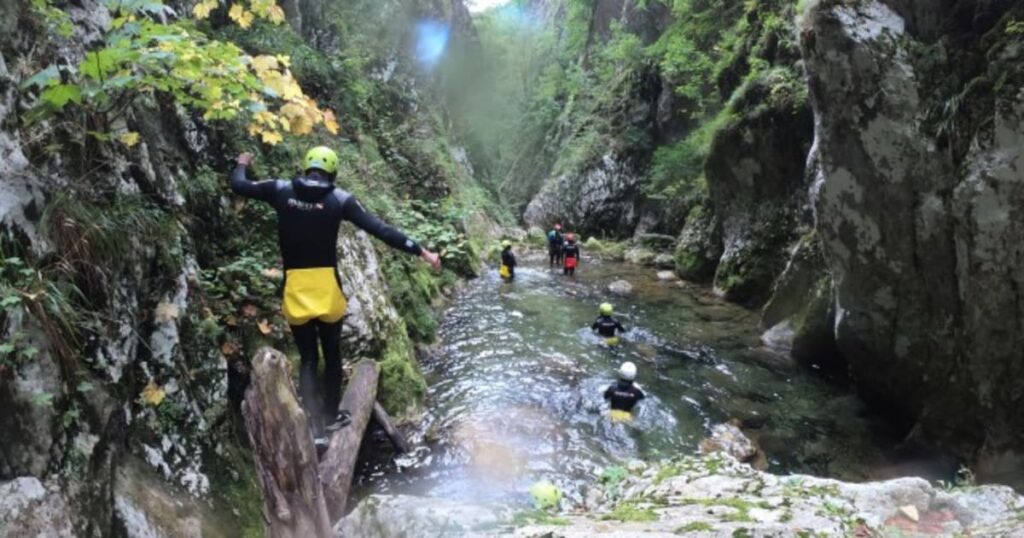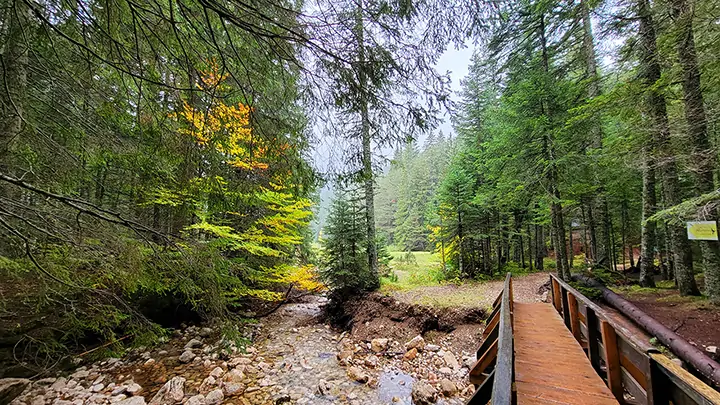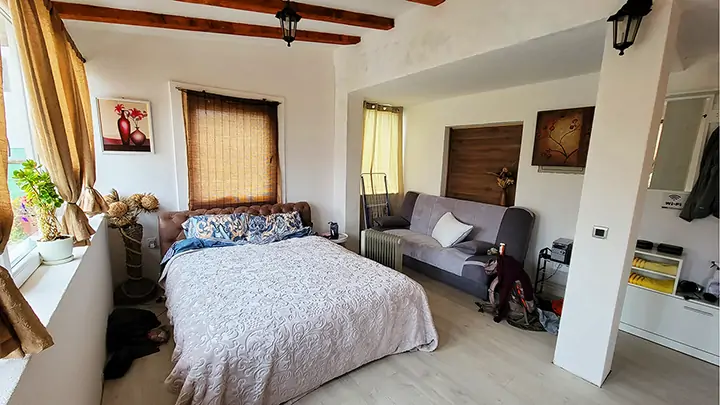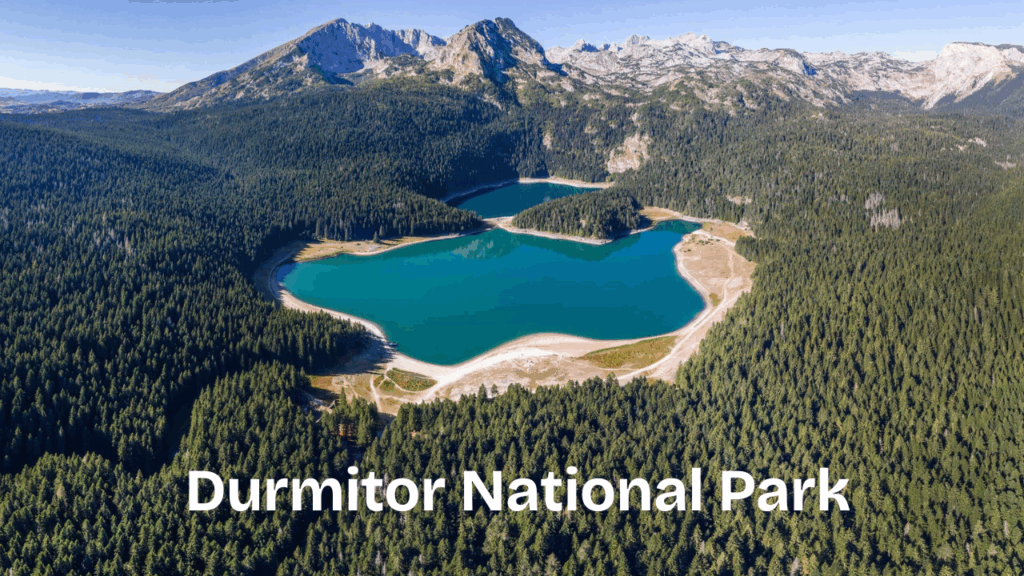Durmitor National Park is a stunning natural area in Montenegro that offers a mix of rugged mountains, deep canyons, and clear glacial lakes. I’ve found it to be a perfect destination for outdoor enthusiasts who enjoy hiking, skiing, or simply experiencing untouched nature. The park covers over 390 square kilometers and is recognized as a UNESCO World Heritage site for its unique landscape and biodiversity.
What stands out most to me about Durmitor is its diversity in terrain—ranging from dense pine forests to the dramatic Tara River Canyon, which is the deepest canyon in Europe. Visitors can explore various trails, witness rare wildlife, and enjoy water activities in the summer months.
If you’re looking to understand why Durmitor is considered one of the Balkans’ most valuable natural treasures, this post will guide you through its key features and how to experience them firsthand. I’ll share practical tips and highlights so you can make the most of your visit.
Overview of Durmitor National Park
Durmitor National Park is a blend of rugged mountains, deep canyons, and glacial lakes. Its designation as a UNESCO World Heritage site highlights its global significance. The park is a key destination for nature lovers, offering diverse ecosystems and a rich history.
Location and Geography of Durmitor National Park
Durmitor National Park is situated in northern Montenegro, near the town of Žabljak. It covers an area of approximately 390 square kilometers. The park lies in the Dinaric Alps, featuring peaks that reach up to 2,522 meters, with Bobotov Kuk being the highest.
The landscape includes steep slopes, karst formations, and over 18 glacial lakes. The Tara River Canyon, running through the park, is one of the deepest river canyons in Europe, plunging around 1,300 meters. The region’s elevation and terrain make it a prime spot for hiking, climbing, and winter sports.
History and UNESCO Status
Durmitor National Park was established in 1952, making it one of Montenegro’s oldest protected areas. Its creation aimed to preserve the unique natural environment and cultural heritage of the region. Over time, the park has expanded its conservation efforts and infrastructure for visitors.
In 1980, UNESCO designated Durmitor National Park as a World Heritage site. This recognition emphasized the park’s status as an area of outstanding natural beauty and ecological importance. The UNESCO listing also protects the park from industrial development and promotes sustainable tourism.
Natural Features
The park’s ecosystems range from alpine meadows to dense coniferous forests. It hosts a variety of flora, including endemic and rare plants like the Durmitor pine. Wildlife is abundant with species such as brown bears, wolves, chamois, and golden eagles.
Water features dominate the landscape, with glacial lakes scattered across the park. Black Lake (Crno Jezero) is the largest and most accessible, known for its clear waters and surrounding pine forests. The park’s biodiversity supports a complex web of life, making it a hotspot for ecological study and outdoor recreation.
READ MORE: Best Time to Visit Iceland
Top Attractions in Durmitor National Park
I found the park’s attractions diverse, ranging from tranquil lakes to dramatic canyons and impressive mountain peaks. The mix of natural beauty and engineering marvels gave me a full experience of what the area offers.

Black Lake
Black Lake is one of the most visited spots in Durmitor. It consists of two interconnected lakes surrounded by dense pine forests and steep mountain slopes. The water is clear and calm, making it ideal for relaxing walks along the marked trails.
The lake’s name comes from the dark appearance of the water at certain angles. I noticed a peaceful atmosphere here, perfect for photography or a quiet picnic. In winter, the lake often freezes, attracting visitors interested in winter sports.
Tara River Canyon
Tara River Canyon is the deepest canyon in Europe, reaching depths of over 1,300 meters. I was impressed by the steep cliffs and fast-flowing river below. It is a prime destination for rafting and kayaking due to its clear water and challenging rapids.
The canyon also provides numerous hiking options along its rim. I used several viewpoints that offer sweeping vistas of the canyon’s rugged landscape, rich with biodiversity. It’s a must-see for anyone interested in geology and outdoor activities.
Đurđevića Tara Bridge
Đurđevića Tara Bridge spans the Tara River Canyon and is an architectural landmark. The bridge has five arches, with the central arch stretching 116 meters, making it one of the largest vehicular concrete arch bridges in the world.
I crossed the bridge on foot to fully appreciate its scale and the panorama it offers over the canyon. It’s also a popular spot for adrenaline seekers who try bungee jumping here. The structure combines functionality with impressive design in a striking natural setting.
Bobotov Kuk
Bobotov Kuk is the highest peak in Durmitor National Park, rising to 2,523 meters. Reaching the summit requires a solid hike, usually starting from the Sedlo Pass or the village of Žabljak. The trail is steep but well-marked.
From the top, I saw panoramic views of surrounding mountain ranges, glacial lakes, and the vast wilderness of the park. The climb is demanding but rewarding, offering a close encounter with the park’s alpine environment and often snow patches lingering into summer.
Outdoor Activities
I found Durmitor National Park offers many ways to engage actively with its rugged landscape and clear waters. Whether I’m on foot, in the water, or scaling rocks, the park provides options suited for varying skill levels and interests.

Hiking and Trekking
Hiking in Durmitor is centered around well-marked trails of varying difficulty. I followed routes like the Bobotov Kuk trail, which takes about 6–8 hours and leads to the park’s highest peak at 2,523 meters. The scenery includes alpine meadows, glacial lakes, and dense pine forests.
Shorter treks, such as the Black Lake circuit, allow for easier, scenic hikes suitable even for casual walkers. I carried water, sturdy boots, and layered clothing because the mountain weather can change quickly. Trail maps are available at park entrances, which I highly recommend using to avoid getting lost.
Rafting and Water Sports
Rafting on the Tara River is a highlight in Durmitor. The river offers several graded sections, mostly Class II and III rapids, making it accessible for beginners but also exciting for experienced rafters. I booked a guided rafting tour that lasted around 3–4 hours, combining thrilling rapids with peaceful stretches through the Tara Canyon.
Other water activities include kayaking and swimming in the clear glacial lakes. The water is cold year-round, so I wore a wetsuit during extended water activities. Safety gear like helmets and life jackets are mandatory, which the rental services provide.
Climbing and Mountaineering
Durmitor’s limestone cliffs attract climbers seeking varied routes. The park features established climbing areas like the Sušički and Ravni Kom areas, offering multi-pitch and single-pitch climbs up to 250 meters high.
I practiced both sport climbing and traditional routes, noting the importance of proper gear and experience due to the exposed positions. Mountaineering in winter requires technical skills and equipment for ice and snow, and guided ascents are recommended for less experienced climbers to navigate safely.
Wildlife and Biodiversity
Durmitor National Park hosts a rich variety of plants and animals adapted to its mountainous environment. The region’s diverse ecosystems support both unique native flora and a range of wildlife species.

Native Flora
I find the plant life in Durmitor particularly diverse due to the park’s varying altitudes and rocky terrain. Coniferous forests dominate, with species like Norway spruce (Picea abies) and Bosnian pine (Pinus heldreichii), which are well adapted to harsh winters.
Above the tree line, alpine meadows are covered with shrubs and hardy flowering plants such as edelweiss and mountain avens. These plants survive in nutrient-poor soils and endure strong winds. Many species here are endemic or rare, making the flora important for conservation.
Fauna of the Park
Durmitor supports a variety of mammals, birds, and reptiles. I’ve noted populations of brown bears, wolves, and lynxes, which are apex predators in the area. Herbivores like chamois and red deer are also common, feeding on the rich vegetation.
Birdlife includes species such as the golden eagle and peregrine falcon, both indicators of a healthy ecosystem. Smaller animals, including reptiles like the common wall lizard, add to the park’s biodiversity. The presence of rare species reflects the park’s well-preserved habitats.
Seasons and Best Time to Visit
Durmitor National Park offers diverse experiences depending on the season. Weather conditions and available activities change significantly throughout the year. The choice of when to visit depends on whether you prefer hiking, sightseeing, or winter sports.

Spring and Summer
Spring starts around late April, with snow melting and the park becoming accessible for hiking by May. The temperature ranges from 10°C to 20°C, making it comfortable for outdoor activities without extreme heat. Wildflowers bloom across meadows, and wildlife is more active.
Summer sees temperatures between 20°C and 25°C, ideal for swimming in glacial lakes like Black Lake. Trails are fully open, and I find this period best for exploring the park’s peaks and valleys. Crowds increase from July to August, so early summer is quieter.
Autumn and Winter
Autumn begins in September with cooler temperatures between 5°C and 15°C. The park’s forests turn vibrant yellow, orange, and red, making it perfect for photography. I prefer visiting in October for peaceful walks and crisp air.
Winter lasts from December to March, with heavy snowfall often exceeding 100 cm. Temperatures can drop below freezing, allowing for skiing and snowboarding at nearby resorts. Access to some areas is limited, but winter sports enthusiasts will find well-maintained options here.
Visitor Information
I learned that knowing entrance details, tour options, and safety measures is essential before visiting Durmitor National Park. It helps me plan effectively and enjoy the park without surprises or risks.
Park Entrance and Fees
To enter Durmitor National Park, I paid an entrance fee, which varies by season. In 2025, the general admission is around €3 per person. Children under 12 and residents from Montenegro often enter for free or at reduced prices.
The main entrance points are near Žabljak town. The park is open year-round, but visiting hours can change seasonally—typically from 7 AM to 8 PM in summer. I made sure to check the official park website for the most current fee and timing updates before my trip.
Parking is available at each entrance. Fees for vehicles are separate and usually modest. I found it useful to carry cash, as card payments aren’t always accepted at entry points.
Guided Tours
I discovered that guided tours add value by offering in-depth knowledge and access to less obvious trails. Professional guides in Durmitor speak multiple languages, including English, which made communication easy.
Guided hiking tours range from half-day to multi-day options. Some tours include transportation from Žabljak, while others focus on specific attractions such as Black Lake or Tara River Canyon. Prices depend on the tour length and group size but generally start around €20 per person.
Booking in advance is recommended, especially in high season, to secure a spot. I booked mine online through authorized agencies linked on the official park website.
Safety Tips
Durmitor’s terrain can be rugged, so I always prepared for sudden weather changes, even in summer. Dressing in layers and carrying rain gear helped me stay comfortable and protected.
I kept my phone fully charged and informed someone outside the park about my hiking plans. Cell reception is limited in remote areas, so I carried a physical map and a basic first aid kit.
Wildlife encounters are rare but possible. I avoided leaving food scraps and stayed on marked trails to minimize risks. Following all park rules and instructions from guides enhanced my safety throughout the visit.
Accommodation Options Near Durmitor National Park
I found a range of lodging choices that suit different preferences and budgets around Durmitor National Park. Whether you want the comfort of a hotel or the experience of camping close to nature, there are practical options available.

Hotels and Lodges
Most hotels and lodges are concentrated in Žabljak, the town nearest the park entrance. I stayed at several places offering amenities like heating, Wi-Fi, and on-site restaurants. Prices vary, with budget hotels around €30-€50 per night and more upscale lodges charging €70-€100.
Some popular options include Hotel Soa, known for its modern facilities and central location, and Apartments Durmitor, which offer self-catering in a quiet area. These spots provide easy access to hiking trails and local shops. Booking in advance is necessary during peak tourist seasons in summer and winter.
Camping Sites
For a more outdoorsy experience, I found several camping sites located inside and near the park. The most notable site is Camping Durmitor, which offers spaces for tents and camper vans, basic facilities like toilets, and water access. This site is near the Tara River, ideal for fishing and rafting enthusiasts.
Another option is the Čurevac Camping Area, which is smaller but closer to some popular hiking routes. Camping fees range from €5 to €10 per night. I recommend bringing your own supplies, as on-site services can be limited. These sites are usually open from late spring to early autumn due to weather conditions.
Local Culture and Cuisine
I found the culture around Durmitor National Park deeply rooted in Montenegrin traditions and hospitality. Food and festivities play a central role in everyday life, reflecting the area’s history and natural surroundings.

Traditional Montenegrin Food
Montenegrin cuisine near Durmitor relies heavily on locally sourced ingredients. I noticed lamb and trout are staples, often prepared simply to emphasize fresh, natural flavors.
One dish I tried was kačamak, a cornmeal-based meal mixed with potatoes and cheese, popular among locals. Another common item is pršut, dry-cured ham aged in mountain air for a distinct taste.
Dairy products like mountain cheese and homemade yogurt are prevalent. Meals often feature seasonal vegetables, wild herbs, and fresh bread baked in wood-fired ovens.
Cultural Events
I observed several events highlight the region’s strong community spirit and folklore. The Durmitor Fest showcases traditional music, dance, and crafts, attracting visitors and locals alike.
During Orthodox Christian holidays, religious ceremonies combined with folk songs take center stage. Shepherds gather for festivals celebrating seasonal livestock movements, reenacting centuries-old customs.
These events offer authentic insight into the area’s identity, blending natural setting with local heritage. Participation or attendance provides an immersive cultural experience distinct to Durmitor.
Travel Tips for Durmitor National Park
I found it important to plan carefully before visiting Durmitor. Knowing the best routes and preparing the right gear can make exploring this park much easier and safer.
How to Get There
The closest major airport is in Podgorica, about 130 kilometers from Durmitor. From there, I took a bus or rented a car to Žabljak, the main town near the park entrance. The road trip is scenic but involves winding mountain roads.
If coming from Serbia or Bosnia, driving is practical with border crossings at Mojkovac or Šćepan Polje. Public transport is limited, so renting a car gives more freedom. In winter, check road conditions as snow can affect access.
What to Pack
I recommend packing layers to handle temperature changes, as it can be hot during the day and cold at night. Hiking boots are essential due to rough, uneven terrain.
Bring a waterproof jacket and a hat for rain or sun protection. A map or GPS device works better than relying solely on phone signals, which can be weak. Don’t forget water, snacks, and sunblock for long treks.

